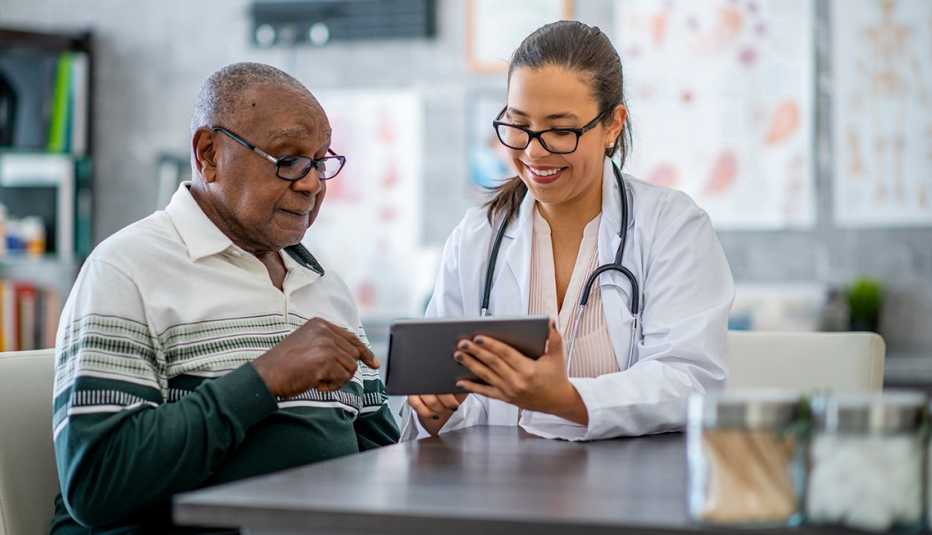AARP Hearing Center
Busy medical waiting rooms are likely a thing of the past. Since the start of the coronavirus outbreak, doctors’ offices throughout the country have scaled back staff, postponed preventive appointments and switched in-person visits to online video chats as much as possible.
However, as states begin to ease their stay-at-home restrictions, medical offices are doing the same by opening their doors to more patients with nonurgent medical needs. Here's what to expect when you need medical care now.
Can I go to my doctor's office? Depends on where you live
It's important to note that physicians’ offices haven't closed due to the coronavirus. Many have remained open to “see patients that they thought really needed to come in,” says Patrice Harris, a psychiatrist and president of the American Medical Association (AMA). It's just that now, some are starting to take on less critical visits, as well. But that, of course, depends on where you live.
Skipping care during the coronavirus outbreak
Nearly half of American adults (48 percent) say they or someone in their household have postponed or skipped medical care due to the coronavirus outbreak, according to a new poll from the Kaiser Family Foundation. And about 11 percent of those who missed out on medical appointments say their condition worsened as a result.
However, as stay-at-home restrictions ease and medical offices resume more routine appointments, most of those who avoided the doctor’s office during the first few months of the pandemic (68 percent) plan to make up for the delayed care in the next three months.
Doctors in Virginia, for example, received the green light to resume non-emergency care at the beginning of May; practices in Oregon and Alaska have also started welcoming nonurgent patients back to their offices.
One Medical, a primary care group with locations nationwide, recently started accepting more routine in-person appointments in its Northern California offices. Other sites are expected to follow, with the exception of New York. “The real distinction there is that the prevalence of community spread of COVID in New York is a very unique environment in terms of the volume of spread,” says Leah Rothman, a family physician and regional medical director for One Medical in Northern California.
The “reopening processes will vary,” community by community, based on “the evidence and the data around COVID-19,” Harris says. Physician practices are “following state and local public health guidelines,” and are “working with state and local health officials,” she adds.
The best thing to do is to call your doctor's office to discuss what is ideal for your particular situation. Even if your physician has started physically seeing more patients, she or he may still prefer a telehealth visit. If the doctor wants to see you in person, the staff will likely want to walk you through any new rules and safety precautions.



































































